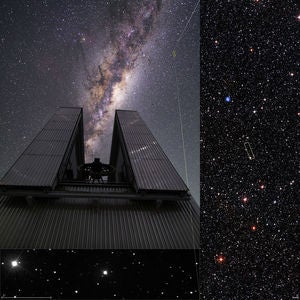The star is a rare relic from the Milky Way’s formative years. As such, it offers astronomers a precious opportunity to explore the origin of the first stars that sprung to life within our galaxy and the universe.
A Brazilian-American team including Vinicius Placco, a research assistant professor at the University of Notre Dame and a member of JINA-CEE (Joint Institute for Nuclear Astrophysics — Center for the Evolution of the Elements), and led by Jorge Meléndez from the University of São Paulo used two of European Southern Observatory’s telescopes in Chile to discover this star, named 2MASS J18082002–5104378.
The star was spotted in 2014 using ESO’s New Technology Telescope. Follow-up observations using ESO’s Very Large Telescope discovered that, unlike younger stars such as the sun, this star shows an unusually low abundance of what astronomers call metals — elements heavier than hydrogen and helium. It is so devoid of these elements that it is known as an ultra metal-poor star.
Although thought to be ubiquitous in the early universe, metal-poor stars are now a rare sight within both the Milky Way and other nearby galaxies. Metals are formed during nuclear fusion within stars, and are spread throughout the interstellar medium when some of these stars grow old and explode. Subsequent generations of stars therefore form from increasingly metal-rich material. Metal-poor stars, however, formed from the unpolluted environment that existed shortly after the Big Bang. Exploring stars such as 2MASS J18082002–5104378 may unlock secrets about their formation, and show what the universe was like at its very beginning.










